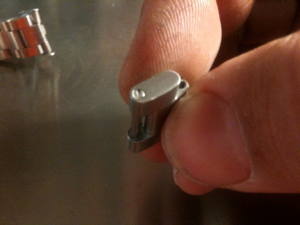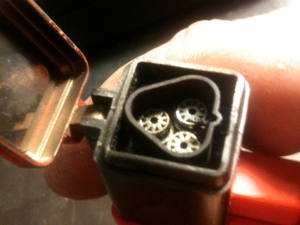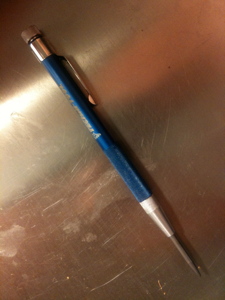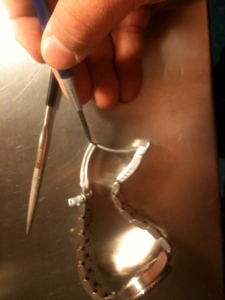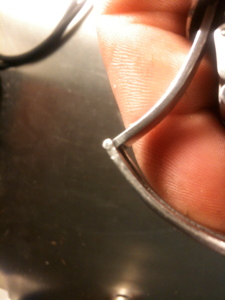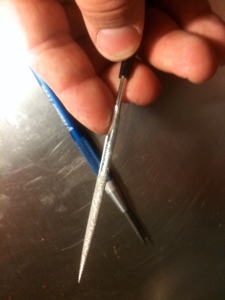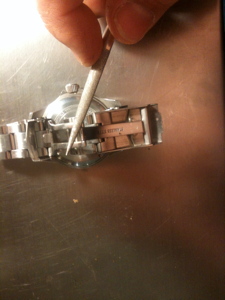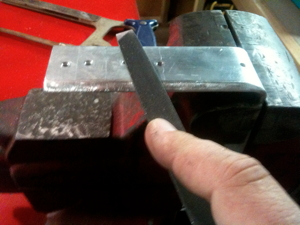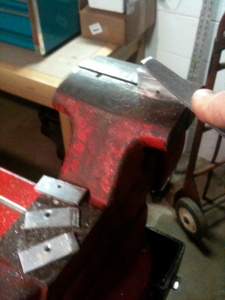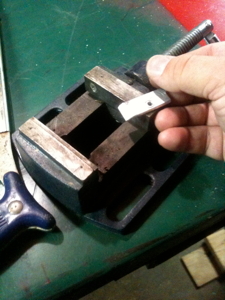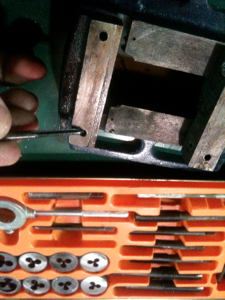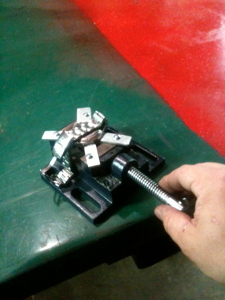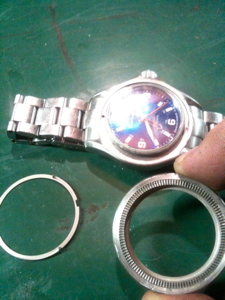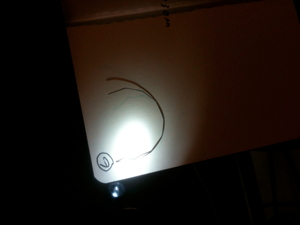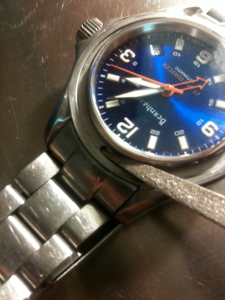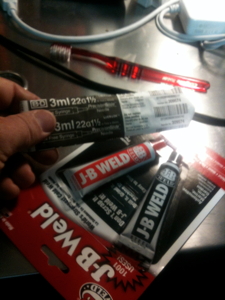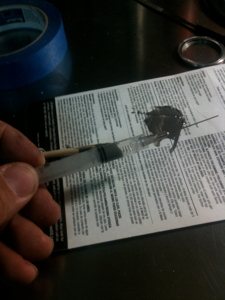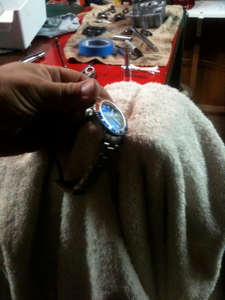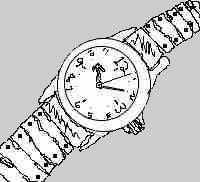Fixing the Screws in a Metal Screw-Type Band
Screw-type, stainless steel bands are great, in fact they are my favorite type of band. A good steel (316L for most watches, Omega included, or 904L for Rolex) that is manufactured as a solid piece (not crafted from folded sheet like many Casios and Seikos.) is right where I want to be. Not that there aren't great folded steel bands out there. I just prefer the real deal. The problem with these bands is that from time to time, the screws may work themselves out and cause you to loose a really expensive watch! Do not fear though, there is a great fix. I don't know if this is what the world does or not, but it has worked for me for years.
The trick is to actually super-glue the threads. I know, it sounds like watch suicide, and it is if there are any plastic inserts in your band. But if your watch band is 100% stainless, then keep reading. Loctite works great also, even the red stuff. Is this over kill? The answer is no. If you use your watch as a tool like I do, after diving, shooting, working outdoors, and heavy tinkering, you know the screws want to work themselves out. The trick to this process is getting the screws back out when you WANT them to.
To get your cemented screws out of your expensive band you simply wash your band thoroughly, take a small, butane fueled, catalyzing torch to the female threads of the link you are trying to take the screw out of. Turn the screw while the heat is on the link, and do it quickly, metal expands when in gets hot, and you only want to expand the link, not the screw. It doesn't take much, and the super-glue or loctite will break down. Some certain Loctites will just emulsify instead of breaking down, this is fine, just heat the link back up to re-install the screw. By using a catalyzing torch you are preventing carbon and other un-burnt particles from fusing to your watch band, if however it does leave scum, or the salts left on your band from improper cleaning discolor the link, simply wash and polish the section. If the finish is brushed, just use a scotch-bright pad.
Fixing a Drifting Pin in a Band Clasp
Eventually, your clasp will work itself in, become looser, and break in to your wrist. This happens after a few months of constant use. After a year or two the band may start to drift the pins out of the pin-hinges of the clasp. The good news is, you can fix this!
First you need to go out and buy yourself a nice Auto-Punch. I purchased mine from Technitool. Place the clasp hinge on a hard surface, and drift the pin back into the clasp with the punch. Then, hit it a couple more times with the punch to expand the pin from the center. Next, turn the clasp over and expand the pin from that side as well. If the clasp gets to firm to operate just lightly bend on the hinge until it moves freely. Be careful not to break the band!
Do not worry if the punch produces sharp edges. Use a diamond file, to knock off all of the burrs. You may also polish the clasp with a greytex and a Drimel tool, but I have always produced a satisfactory finish with the diamond file and some finesse.
Back to IndexTaking the half second slop out of a 120 click bezel
Some watches do everything right. Many watches do everything right except for the bezel. There are a lot of watches out there with great bezels. The original Luminox for example, has a fantastic, no-slop, 60 click bezel. I generally look for 120 click (half second/minute) graduations because (founded or not) I believe the tolerances must be higher for those watches. My Bernhardt watch does everything very well for a great price, but it has about 1/2 a second worth of slop in the bezel. In fact this is my only problem with an otherwise world class watch. To work on the problem I first needed to build a fingered vise to separate the bezel from the case. This must be done evenly, no screw drivers here. You could easily throw away your half grand. I had to make my bezel remover by the way because the alternative is this
I used an angle grinder to put the bevel on the aluminum, then I took off the sharp edges with a file. With the vise configured I placed the watch into the fingers. The way my vise was set up it seemed to work better upside down. The great thing about using aluminum fingers, aside from being really easy to develop parts with, is that they are softer than the steel watch case. This means it's easier to keep your watch from getting scratched. After the bezel was popped off ever so carefully I lost the bezel retainer spring to the floor's abyss. The trick I found for finding the crescent spring is to turn off all the lights and use a flashlight to look for crescent shapes on the floor. Using the flashlight allows you to scan only one area at a time and only look for a specific pattern.
After I found the retainer spring I gave the click spring and retainer spring a quick dip in my ultrasonic cleaner (with Windex as the solvent). These things are great and are getting cheaper, look on eBay. I did not put the watch or the bezel in the cleaner, this is important because the liquid will find a way into these parts. Next I cleaned out the click spring hole with a small diamond file on the watch. OK, the key to a satisfying bezel with no slop is JB weld. You need to buy a bunch of syringes, not only for the end of the world to help your fellow man and to sell in a pinch, but they are fantastic for working with JB weld in small places. First you need to file off the bevel on the tip. Use a Drimel tool if you can because you do not want to close the hole. Don't get stabbed while your doing this. This is also a good time to tell everyone to throw away the needle after you are done using it. even if it could still be used as a probe or something, throw it out. You do not want to have needles that cannot be used as needles hanging around. This is the same reason I no longer use beakers and Erlenmeyer flasks to drink out of, but that's another story. Next you need to mix some JB weld, I use a chop stick.
Now use the needle to fill the hole that holds the click spring for the bezel. Fill the small hole from the side, because you want to completely fill it with no bubbles. Now with a 120 click bezel it is hard to notice, but with a 60 click bezel you need to think about which side of the hole you put the spring against because if you don't. you might need to lift up your bezel ring and replace it in the bezel to realign it. Place the click spring in the hole and use tweezers to make sure it is completely flat on the watch. Wait a day, and reassemble. To get the bezel back on, I put a towel in a big vise and was just really careful, it doesn't take THAT much force.
Bezel Insert Replacement
After around five years of very hard use, not limited to diving, tactical training, fights, and general abuse, the bezel insert was starting to show it's age. I talked with Fred of Bernhardt Watch, formerly Bernhardt Instruments; I bought a replacement band and he GAVE me a replacement bezel insert. Replacing the insert is not tough but it does require some skill and time to do correctly.


The idea here is to remove the old bezel insert and all of the cement that had been holding it to the bezel, without destroying/scratching/maring the bezel its self. To do this you use heat and a sharp flathead screwdriver. Being very carefull of two things: DO NOT HEAT THE CRYSTAL, and DO NOT SCRATCH THE BEZEL. It doesn't take much heat, so don't put the torch directly on the bezel, keep it moving. Take your time and only work in a localized area. Eventually you will be able to work the flathead under the bezel insert. Then just work your way around the bezel.
There will be adhesive cement left on the bezel. You definitely do not want to heat your watch, especially if you took the slop out of the bezel with JB-Weld like I did. However, using your torch you can carefully flash-heat the cement to help remove it. Then I used a combination of chopstick, jeweler's tweasers, and a spudger to remove much of the adhesive.



One trick I found that works great is using a soldering iron to localize the heat to remove hard or stubborn cement. Worked great!

I contenually used a hand blower to dust off my working area and used a jeweler's loup to find any spots I missed. Then I scrubbed the bezel with alchohol to remove any grease I may have left with my fingers. Take time doing this and make sure to blow off (with the hand blower) any fibers left from the alchohol swabs.



As a side note, I replaced the band. I lock-tighted all the links (or they will unlink and you will loose your watch). Notice how much bend is in the old band as opposed to the new one.


Back to Index


